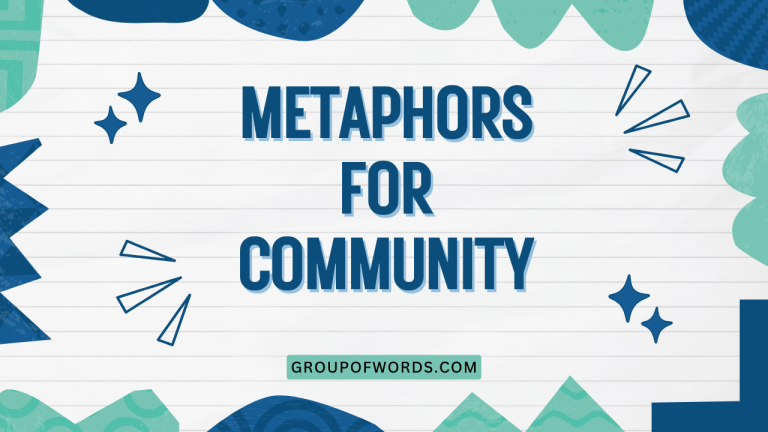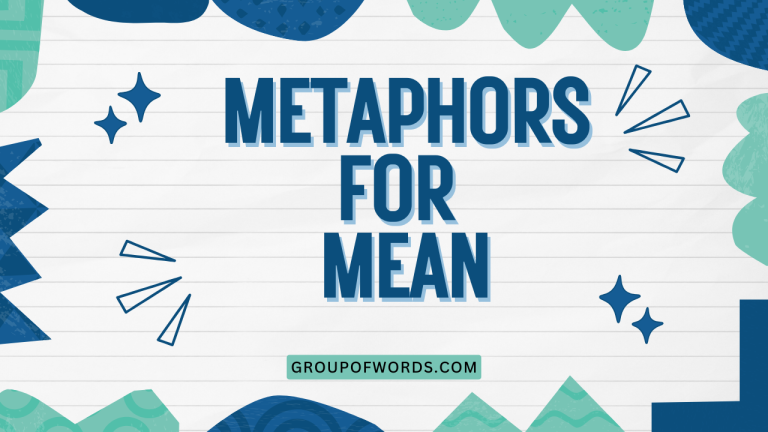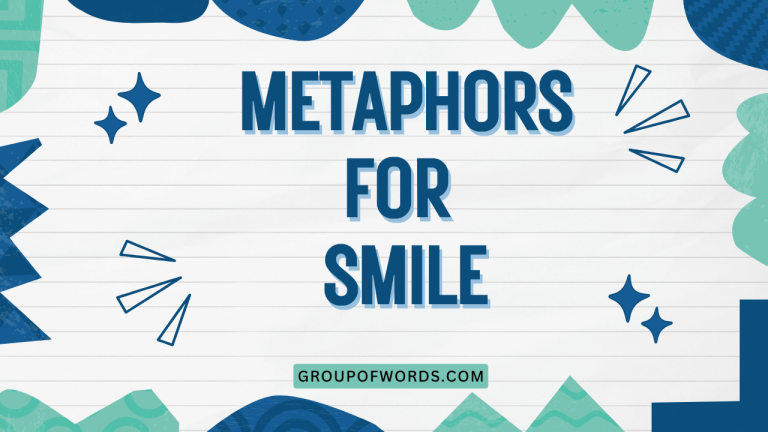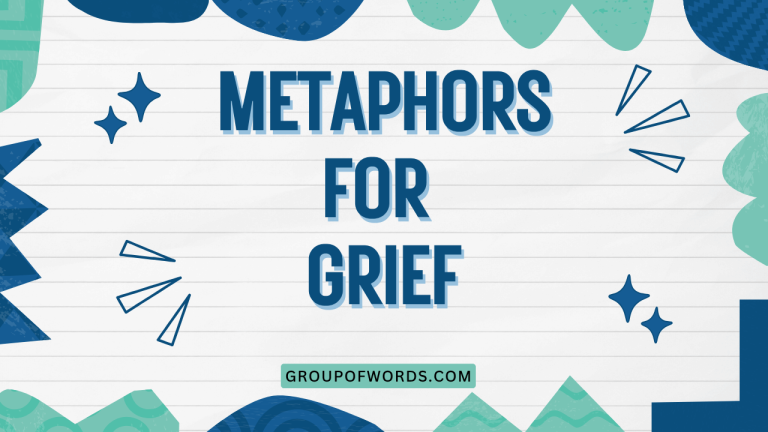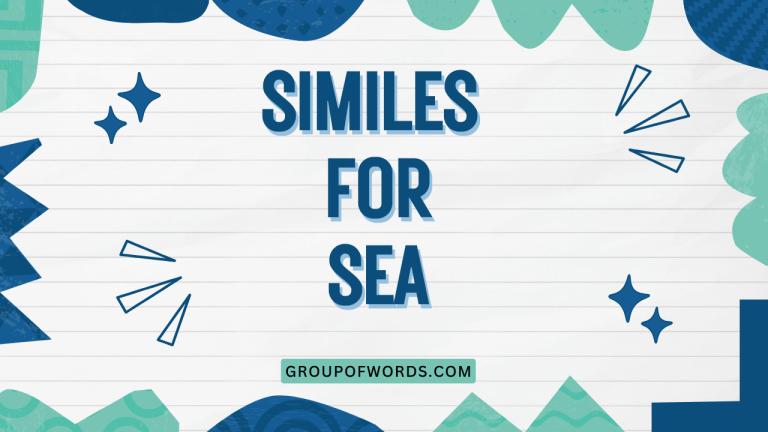Similes for Success: Mastering Figurative Language
Understanding similes is crucial for anyone looking to enhance their English language skills, whether for academic, professional, or personal enrichment. Similes, a type of figurative language, allow us to paint vivid pictures with words, making our communication more engaging and memorable.
This article delves into the world of similes, specifically focusing on their usage in the context of success. By mastering the art of using similes, you can express complex ideas with clarity and creativity.
This guide is perfect for students, writers, and English language learners seeking to elevate their communication skills.
Table of Contents
- Introduction
- Definition of Simile
- Structural Breakdown of Similes
- Types of Similes
- Examples of Similes for Success
- Usage Rules for Similes
- Common Mistakes with Similes
- Practice Exercises
- Advanced Topics: Metaphors vs. Similes
- Frequently Asked Questions
- Conclusion
Introduction
Similes are powerful tools in the English language, adding color and depth to our expressions. They enable us to draw comparisons between seemingly unrelated things, creating memorable and impactful statements.
This article focuses specifically on similes related to success, providing you with the knowledge and skills to use them effectively in your writing and speech. Whether you are a student, a professional, or simply an enthusiast of the English language, this guide will help you master the art of crafting compelling similes.
By understanding the structure, types, and proper usage of similes, you can significantly improve your communication skills. This article provides clear explanations, numerous examples, and practical exercises to help you grasp the concepts and apply them effectively.
We will also address common mistakes and explore advanced topics, ensuring a comprehensive understanding of similes for success.
Definition of Simile
A simile is a figure of speech that directly compares two different things using the words “like” or “as.” The purpose of a simile is to illustrate a similarity between the two things being compared, making the description more vivid and relatable. Similes are essential in both writing and speech, adding color, depth, and clarity to communication.
Similes are classified as a type of figurative language, which means they use words or expressions with a meaning that is different from the literal interpretation. The function of a simile is to create a mental image or evoke a feeling by drawing a comparison between two unlike things.
Similes are used in various contexts, from literature and poetry to everyday conversations and business presentations.
Structural Breakdown of Similes
The basic structure of a simile involves three key elements: the **subject**, the **linking word** (“like” or “as”), and the **object of comparison**. Understanding these elements is crucial for constructing effective and meaningful similes.
The subject is the thing being described or compared. The linking word, either “like” or “as,” establishes the comparison.
The object of comparison is the thing to which the subject is being compared. For example, in the simile “He is as brave as a lion,” “He” is the subject, “as” is the linking word, and “a lion” is the object of comparison.
The structure can be represented as follows:
Subject + Linking Word (like/as) + Object of Comparison
This structure provides a clear framework for creating impactful similes. By carefully selecting the subject and the object of comparison, you can effectively convey the intended meaning and create a vivid image in the reader’s or listener’s mind.
Types of Similes
While all similes share the same basic structure, they can be categorized based on the type of comparison they make. Understanding these categories can help you choose the most effective simile for your specific purpose.
Descriptive Similes: These similes focus on describing a quality or characteristic of the subject. They often use sensory details to create a vivid image.
Explanatory Similes: These similes aim to explain or clarify a concept by comparing it to something more familiar or understandable.
Emphatic Similes: These similes are used to emphasize a particular point or feeling, making the statement more impactful.
Humorous Similes: These similes are used to create a humorous effect, often by comparing something serious to something absurd.
By understanding these different types of similes, you can choose the most appropriate one for your specific context and purpose, enhancing the effectiveness of your communication.
Examples of Similes for Success
Here are numerous examples of similes related to success, categorized by different aspects such as effort, achievements, resilience, leadership, and innovation. Each category includes a variety of similes to illustrate the diverse ways in which this figurative language can be used.
Effort and Dedication
These similes emphasize the importance of hard work and commitment in achieving success. They highlight the qualities of diligence, perseverance, and unwavering focus.
The following table provides 30 examples of similes related to effort and dedication, showcasing various ways to describe the intensity and impact of hard work.
| Simile | Explanation |
|---|---|
| He worked like a dog to achieve his goals. | Emphasizes the relentless effort and hard work. |
| She was as persistent as a dripping faucet. | Highlights the unwavering and continuous effort. |
| His dedication was like a burning flame. | Illustrates the intense and passionate commitment. |
| She approached the task like a bee to honey. | Shows the eagerness and focused attention. |
| He was as tireless as a machine. | Highlights the ability to work continuously without fatigue. |
| She studied like an owl, late into the night. | Emphasizes the dedication to learning and studying. |
| His efforts were as consistent as the rising sun. | Illustrates the reliability and regularity of his work. |
| She tackled the project like a lion hunting its prey. | Shows the determination and focus in pursuing a goal. |
| He was as diligent as an ant, always working. | Highlights the constant and meticulous effort. |
| Her commitment was like an anchor, holding her steady. | Emphasizes the unwavering dedication despite challenges. |
| He pursued his dreams like a heat-seeking missile. | Shows the unwavering focus and determination to achieve his goals. |
| She was as focused as a laser beam. | Highlights the intense concentration and attention to detail. |
| His work ethic was like a well-oiled machine. | Illustrates the smooth and efficient execution of tasks. |
| She dedicated herself to the cause like a martyr. | Emphasizes the selflessness and unwavering commitment. |
| He approached the challenge like a seasoned athlete. | Shows the experience and preparedness in tackling difficult tasks. |
| She was as steadfast as a rock in her determination. | Highlights the unwavering and resolute commitment. |
| He toiled like a farmer in the fields. | Emphasizes the hard physical labor and dedication. |
| She persevered like a marathon runner. | Illustrates the endurance and determination to reach the finish line. |
| His dedication was like a lighthouse, guiding his path. | Shows the unwavering commitment and direction. |
| She was as meticulous as a surgeon. | Highlights the attention to detail and precision in her work. |
| He worked through the night like a watchman. | Emphasizes the vigilance and dedication to his task. |
| She was as relentless as a bill collector. | Highlights the persistence and determination to achieve her goals. |
| His efforts were like a snowball rolling downhill, gathering momentum. | Illustrates the increasing impact and progress of his work. |
| She applied herself like a scholar studying ancient texts. | Shows the dedication and focus in her pursuit of knowledge. |
| He was as committed as a soldier to his duty. | Emphasizes the unwavering dedication and loyalty. |
| Her determination was like a compass, always pointing her in the right direction. | Highlights the unwavering focus and guidance. |
| He approached the task like a craftsman perfecting his art. | Shows the dedication and attention to detail in his work. |
| She was as persistent as ivy climbing a wall. | Illustrates the unwavering and continuous effort. |
| His dedication was like a beacon, inspiring others. | Emphasizes the positive impact and influence of his commitment. |
| She worked like a beaver building a dam. | Highlights the industriousness and dedication to her task. |
Achievements and Accomplishments
These similes describe the feeling of success and the tangible results of hard work. They often use imagery of triumph, victory, and recognition.
The following table provides 30 examples of similes related to achievements and accomplishments, illustrating the diverse ways to describe the taste of success.
| Simile | Explanation |
|---|---|
| His success was like a dream come true. | Emphasizes the joy and fulfillment of achieving a long-awaited goal. |
| Her accomplishments shone as bright as the stars. | Illustrates the brilliance and significance of her achievements. |
| His victory tasted like sweet nectar. | Highlights the delightful and satisfying feeling of success. |
| Her achievements were as solid as a rock. | Emphasizes the lasting and substantial nature of her accomplishments. |
| His success felt like climbing Mount Everest. | Shows the magnitude and challenge of achieving his goals. |
| Her accomplishments were like a symphony, harmonious and beautiful. | Illustrates the complexity and artistry of her achievements. |
| His victory was as resounding as a thunderclap. | Emphasizes the impact and significance of his success. |
| Her achievements were like a beacon of hope. | Highlights the positive influence and inspiration of her accomplishments. |
| His success was as fulfilling as a warm embrace. | Emphasizes the emotional satisfaction and contentment. |
| Her accomplishments were like a tapestry, rich and intricate. | Illustrates the complexity and beauty of her achievements. |
| His victory felt like winning the lottery. | Shows the unexpected and fortunate nature of his success. |
| Her accomplishments were like a blooming garden, full of life. | Illustrates the growth and vitality of her achievements. |
| His success was as rewarding as helping others. | Emphasizes the altruistic and fulfilling aspect of his achievements. |
| Her accomplishments were like a well-deserved vacation. | Highlights the relaxation and satisfaction after hard work. |
| His victory was as sweet as honey. | Emphasizes the delightful and satisfying feeling of success. |
| Her achievements were like a masterpiece, timeless and beautiful. | Illustrates the lasting impact and artistry of her accomplishments. |
| His success felt like reaching the summit of a mountain. | Shows the challenge and triumph of achieving his goals. |
| Her accomplishments were like a phoenix rising from the ashes. | Illustrates the resilience and triumph over adversity. |
| His victory was as complete as a finished puzzle. | Emphasizes the sense of closure and accomplishment. |
| Her achievements were like a constellation, shining brightly. | Illustrates the brilliance and significance of her accomplishments. |
| His success was as gratifying as receiving a standing ovation. | Emphasizes the recognition and appreciation for his efforts. |
| Her accomplishments were like a ship sailing into port after a long journey. | Illustrates the sense of arrival and completion. |
| His victory felt like breaking free from chains. | Shows the liberation and empowerment of achieving his goals. |
| Her achievements were like a lighthouse guiding ships to safety. | Illustrates the positive impact and guidance of her accomplishments. |
| His success was as fulfilling as a warm summer breeze. | Emphasizes the pleasant and satisfying feeling of his achievements. |
| Her accomplishments were like a symphony of colors. | Illustrates the beauty and harmony of her achievements. |
| His victory felt like finding a hidden treasure. | Shows the unexpected and rewarding nature of his success. |
| Her achievements were like a blooming flower, radiating beauty. | Illustrates the growth and vibrancy of her accomplishments. |
| His success was as satisfying as a job well done. | Emphasizes the sense of accomplishment and pride. |
| Her accomplishments were like a beacon in the darkness, guiding others forward. | Illustrates the positive impact and inspiration of her achievements. |
Resilience and Determination
These similes highlight the ability to overcome obstacles and persevere in the face of adversity. They often use imagery of strength, endurance, and unwavering resolve.
Here are 30 examples of similes related to resilience and determination, showcasing the strength and tenacity required to overcome challenges.
| Simile | Explanation |
|---|---|
| He was as resilient as a rubber ball, always bouncing back. | Emphasizes the ability to recover quickly from setbacks. |
| Her determination was like a steel rod, unbending and strong. | Illustrates the unwavering resolve and strength of character. |
| He faced adversity like a warrior in battle. | Shows the courage and resilience in confronting challenges. |
| Her spirit was as unbreakable as a diamond. | Emphasizes the strength and resilience of her inner self. |
| He persevered like a river carving through stone. | Illustrates the persistent and unwavering effort over time. |
| Her resolve was like an anchor, holding her steady in the storm. | Emphasizes the stability and strength in facing adversity. |
| He bounced back from failure like a seasoned boxer. | Shows the experience and resilience in recovering from setbacks. |
| Her determination was as fierce as a wildfire. | Illustrates the intense and unwavering resolve. |
| He faced challenges like a mountain climber scaling a peak. | Shows the determination and perseverance in overcoming obstacles. |
| Her resilience was like a phoenix rising from the ashes. | Emphasizes the ability to recover and thrive after setbacks. |
| He stood his ground like an oak tree in a hurricane. | Shows the strength and stability in the face of adversity. |
| Her determination was as unwavering as the North Star. | Illustrates the constant and reliable resolve. |
| He overcame obstacles like a stream navigating rocks. | Shows the adaptability and persistence in overcoming challenges. |
| Her spirit was as indomitable as a lion’s roar. | Emphasizes the strength and resilience of her inner self. |
| He pushed through adversity like a train through a tunnel. | Shows the unwavering determination to reach the other side. |
| Her resilience was like a willow tree bending in the wind. | Illustrates the ability to adapt and recover from challenges. |
| He faced setbacks like a chess player planning his next move. | Shows the strategic and thoughtful approach to overcoming obstacles. |
| Her determination was as persistent as the tide. | Illustrates the unwavering and continuous resolve. |
| He weathered the storm like a lighthouse standing tall. | Shows the strength and stability in facing adversity. |
| Her resilience was like a bridge spanning troubled waters. | Emphasizes the ability to overcome and connect across challenges. |
| He faced criticism like a shield deflecting arrows. | Shows the ability to protect himself and persevere. |
| Her determination was as unyielding as a mountain range. | Illustrates the unwavering and resolute resolve. |
| He overcame obstacles like a dancer gracefully leaping over hurdles. | Shows the skill and finesse in overcoming challenges. |
| Her spirit was as resilient as a spring, always returning to its original form. | Emphasizes the ability to bounce back from setbacks. |
| He faced adversity like a captain steering a ship through rough seas. | Shows the leadership and determination in navigating challenges. |
| Her determination was as solid as the ground beneath her feet. | Illustrates the unwavering and steadfast resolve. |
| He bounced back from failure like a tennis ball returning over the net. | Shows the quick recovery and determination to continue. |
| Her resilience was like a sunflower turning towards the sun. | Emphasizes the ability to find hope and strength in adversity. |
| He faced setbacks like a scientist conducting experiments. | Shows the analytical and persistent approach to overcoming challenges. |
| Her determination was as constant as the beating of her heart. | Illustrates the unwavering and essential resolve. |
Leadership and Influence
These similes describe the qualities of effective leaders and the impact they have on others. They often use imagery of guidance, inspiration, and strength.
Here are 20 examples of similes related to leadership and influence, showcasing the qualities and impact of effective leaders.
| Simile | Explanation |
|---|---|
| He led his team like a conductor leading an orchestra. | Emphasizes the coordination and harmony he brings to the group. |
| Her influence spread like ripples in a pond. | Illustrates the far-reaching and expanding impact of her actions. |
| He guided his followers like a shepherd leading his flock. | Shows the care and direction he provides to those under his leadership. |
| Her leadership was as inspiring as a motivational speech. | Emphasizes the ability to uplift and encourage others. |
| He commanded respect like a king on his throne. | Shows the authority and admiration he commands. |
| Her influence was like a magnet, attracting followers. | Illustrates the compelling and persuasive nature of her leadership. |
| He led by example like a beacon shining in the night. | Shows the guidance and inspiration he provides through his actions. |
| Her leadership was as steady as a ship’s captain in a storm. | Emphasizes the stability and direction she provides in challenging situations. |
| He inspired his team like a coach motivating his players. | Shows the encouragement and drive he instills in others. |
| Her influence was like a gentle breeze, guiding others in the right direction. | Illustrates the subtle yet effective guidance she provides. |
| He led with vision like an architect designing a masterpiece. | Shows the foresight and planning he brings to his leadership. |
| Her leadership was as empowering as giving someone wings to fly. | Emphasizes the ability to enable and uplift others. |
| He commanded attention like a spotlight on a stage. | Shows the captivating and authoritative presence he possesses. |
| Her influence was like a seed planted in fertile ground, growing and flourishing. | Illustrates the potential and impact of her actions. |
| He led with integrity like a compass pointing true north. | Shows the honesty and ethical guidance he provides. |
| Her leadership was as transformative as a caterpillar turning into a butterfly. | Emphasizes the ability to inspire growth and change in others. |
| He guided his team like a teacher nurturing his students. | Shows the care and development he provides to those under his leadership. |
| Her influence was like a river flowing, shaping the landscape around it. | Illustrates the powerful and transformative impact of her actions. |
| He led with courage like a knight charging into battle. | Shows the bravery and determination he brings to his leadership. |
| Her leadership was as illuminating as a lighthouse guiding ships to shore. | Emphasizes the guidance and direction she provides to others. |
Innovation and Creativity
These similes describe the qualities of innovative thinkers and the impact of their creative ideas. They often use imagery of originality, imagination, and breakthrough moments.
Here are 20 examples of similes related to innovation and creativity, showcasing the unique qualities and impact of innovative thinkers.
| Simile | Explanation |
|---|---|
| His ideas sparked like a lightning bolt. | Emphasizes the sudden and impactful nature of his innovative thoughts. |
| Her creativity flowed like a never-ending stream. | Illustrates the continuous and abundant nature of her innovative ideas. |
| His inventions were as groundbreaking as the discovery of electricity. | Shows the transformative and revolutionary nature of his work. |
| Her imagination soared like an eagle in flight. | Emphasizes the boundless and expansive nature of her creative thinking. |
| His innovations were like a breath of fresh air. | Illustrates the revitalizing and refreshing impact of his ideas. |
| Her creativity was like a kaleidoscope, constantly shifting and creating new patterns. | Emphasizes the diverse and ever-changing nature of her innovative thinking. |
| His ideas blossomed like flowers in spring. | Shows the growth and development of his innovative thoughts. |
| Her inventions were as revolutionary as the invention of the printing press. | Illustrates the transformative and far-reaching impact of her work. |
| His creativity was like a painter’s palette, full of vibrant colors and possibilities. | Emphasizes the diverse and expressive nature of his innovative thinking. |
| Her ideas were like stars in the night sky, illuminating the darkness. | Illustrates the brilliance and guidance of her innovative thoughts. |
| His inventions were as transformative as the invention of the internet. | Shows the revolutionary and interconnected impact of his work. |
| Her creativity was like a composer’s symphony, harmonious and complex. | Emphasizes the intricate and beautiful nature of her innovative thinking. |
| His ideas were like seeds planted in fertile ground, growing into something extraordinary. | Illustrates the potential and development of his innovative thoughts. |
| Her inventions were as groundbreaking as the discovery of penicillin. | Shows the transformative and life-changing impact of her work. |
| His creativity was like a sculptor’s chisel, shaping new forms and possibilities. | Emphasizes the skill and artistry of his innovative thinking. |
| Her ideas were like a puzzle, challenging and rewarding to solve. | Illustrates the complexity and satisfaction of her innovative thoughts. |
| His inventions were as revolutionary as the invention of the automobile. | Shows the transformative and widespread impact of his work. |
| Her creativity was like a flowing river, carving new paths and possibilities. | Emphasizes the dynamic and transformative nature of her innovative thinking. |
| His ideas were like a spark igniting a flame, inspiring others to create. | Illustrates the contagious and motivating nature of his innovative thoughts. |
| Her inventions were as groundbreaking as the development of artificial intelligence. | Shows the transformative and future-oriented impact of her work. |
Usage Rules for Similes
To use similes effectively, it is essential to follow certain rules. These rules ensure that your similes are clear, meaningful, and impactful.
One of the primary rules is to ensure that the two things being compared share a common characteristic or quality. The comparison should be logical and relevant.
Avoid using clichés or overused similes. Clichés can make your writing sound unoriginal and predictable.
Instead, strive to create fresh and imaginative comparisons. Ensure that your similes are appropriate for the context and audience.
The comparison should be easily understood and relatable.
Pay attention to the tone and style of your writing. Similes should enhance the overall tone and style, not detract from it.
Use similes sparingly. Overusing similes can make your writing sound forced and unnatural.
Use them strategically to create the greatest impact.
Common Mistakes with Similes
One common mistake is using similes that don’t make logical sense. For example, saying “He is as tall as a tree” is a valid simile, but saying “He is as tall as happiness” is not, because happiness is an abstract concept that cannot be measured in height.
Another common mistake is confusing similes with metaphors. While both are figures of speech that make comparisons, similes use “like” or “as,” while metaphors directly state that one thing *is* another.
For example, “He is like a lion” is a simile, while “He is a lion” is a metaphor.
Overusing clichés is also a frequent error. Phrases like “as busy as a bee” or “as white as snow” are so common that they have lost their impact.
Strive for originality in your comparisons to make your writing more engaging.
Here are some examples of common mistakes with similes and how to correct them:
| Incorrect Simile | Correct Simile | Explanation |
|---|---|---|
| He is as tall as the sky. | He is as tall as a skyscraper. | The sky is too vast to be a relatable comparison for height. |
| She is as fast as sadness. | She is as fast as a cheetah. | Sadness is an abstract concept and cannot be measured in speed. |
| He is as busy as a bee. | He is as busy as a project manager during a deadline. | “As busy as a bee” is a cliché; the corrected simile is more specific and original. |
| She is as white as snow. | She is as white as a freshly painted wall. | “As white as snow” is a cliché; the corrected simile is more descriptive. |
Practice Exercises
Test your understanding of similes with these practice exercises. Each exercise includes multiple questions to help you reinforce your knowledge and skills.
Exercise 1: Identify the Simile
Identify the simile in each sentence.
| Question | Answer |
|---|---|
| 1. Her voice was as smooth as silk. | as smooth as silk |
| 2. He is a true leader. | (No simile) |
| 3. The stars were like diamonds in the sky. | like diamonds in the sky |
| 4. Time is money. | (No simile) |
| 5. The news spread like wildfire. | like wildfire |
| 6. She sings beautifully. | (No simile) |
| 7. The child slept like a log. | like a log |
| 8. He is the rock of our family. | (No simile) |
| 9. The cake was as light as a feather. | as light as a feather |
| 10. Life is a journey. | (No simile) |
Exercise 2: Complete the Simile
Complete each simile with an appropriate ending.
| Question | Answer |
|---|---|
| 1. He is as strong as _____. | an ox |
| 2. She is as graceful as _____. | a swan |
| 3. The exam was as easy as _____. | pie |
| 4. They fought like _____. | cats and dogs |
| 5. The night was as dark as _____. | pitch |
| 6. The coffee was as hot as _____. | lava |
| 7. The car was as fast as _____. | a rocket |
| 8. The joke was as old as _____. | the hills |
| 9. The team worked like _____. | a well-oiled machine |
| 10. His temper was as explosive as _____. | a volcano |
Exercise 3: Create Your Own Simile
Create a simile for each of the following words.
| Word | Simile |
|---|---|
| 1. Success | Success is like a blooming flower, radiating beauty and joy. |
| 2. Determination | Determination is like a compass, always pointing you in the right direction. |
| 3. Hard work | Hard work is like climbing a mountain, challenging but rewarding. |
| 4. Resilience | Resilience is like a rubber band, always bouncing back from setbacks. |
| 5. Innovation | Innovation is like a spark, igniting new ideas and possibilities. |
| 6. Leadership | Leadership is like conducting an orchestra, harmonizing diverse talents. |
| 7. Courage | Courage is like a shield, protecting you from fear and doubt. |
| 8. Wisdom | Wisdom is like a lighthouse, guiding you through the darkest storms. |
| 9. Patience | Patience is like planting a seed, waiting for it to grow and bloom. |
| 10. Creativity | Creativity is like a flowing river, constantly shaping new landscapes. |
Advanced Topics: Metaphors vs. Similes
While similes and metaphors both make comparisons,
they do so in different ways. A simile uses “like” or “as” to draw a comparison, whereas a metaphor implies the comparison by stating that one thing is another. Understanding this distinction is crucial for mastering figurative language.
Consider the following examples:
- Simile: “Her determination was like a steel rod, unbending and strong.”
- Metaphor: “Her determination was a steel rod, unbending and strong.”
In the simile, we are explicitly comparing her determination to a steel rod using the word “like.” In the metaphor, we are directly stating that her determination is a steel rod, implying a stronger and more direct comparison.
Metaphors can often add more depth and intensity to your writing, but they also require a more nuanced understanding of language and context. Similes, on the other hand, are generally more straightforward and easier to construct.
Frequently Asked Questions
Here are some frequently asked questions about similes, along with detailed answers to help clarify any remaining doubts.
Q: What is the difference between a simile and a metaphor?
A: A simile uses “like” or “as” to compare two things, while a metaphor directly states that one thing is another. Similes are more explicit in their comparison, while metaphors are more implicit and can add greater depth to your writing.
Q: Can a simile be a cliché?
A: Yes, a simile can be a cliché if it is overused and lacks originality. To avoid this, try to create fresh and imaginative comparisons that are specific to the context of your writing.
Q: How do I create effective similes?
A: To create effective similes, ensure that the two things being compared share a common characteristic or quality. The comparison should be logical, relevant, and appropriate for the context and audience.
Avoid using clichés and strive for originality.
Q: Is it okay to use similes frequently in my writing?
A: While similes can enhance your writing, it’s important to use them sparingly. Overusing similes can make your writing sound forced and unnatural.
Use them strategically to create the greatest impact.
Q: What are some common mistakes to avoid when using similes?
A: Common mistakes include using similes that don’t make logical sense, confusing similes with metaphors, and overusing clichés. Always ensure that your similes are clear, meaningful, and original.
Conclusion
Mastering the art of using similes can significantly enhance your communication skills, adding color, depth, and clarity to your writing and speech. By understanding the structure, types, and usage rules of similes, you can effectively convey your ideas and create vivid images in the minds of your audience.
Remember to avoid common mistakes, strive for originality, and use similes strategically to create the greatest impact. With practice and attention to detail, you can become proficient in crafting compelling similes that elevate your communication and help you achieve success in various aspects of your life.

